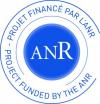|
Specific point sources account for around 50% of current anthropological CO2 emissions. If these can be addressed, then it should be possible to reduce atmospheric levels of this greenhouse gas. However, the conditions of pressure, concentration and temperature vary considerably from one process to another. Indeed, two areas of CO2 capture can be distinguished :
-
Low pressure : post-combustion capture (power stations, cement, steel works) where the CO2 can reach up to 20% of the total exhaust at atmospheric pressure whose main component is N2. Another major factor which can be considered is the presence of water vapour which acts as a contaminant. The group will equally treat O2/N2 separation in view of oxy-combustion.
-
High pressure : several chemical processes produce CO2 which need to be separated from CO2/CH4, CO2/H2 et CO2/CO mixtures (ammonia production, Syngas, hydrogen purification), the total pressure of the exhaust gas can be in the region of 20-30 bars and in natural gas purification, the well-head pressure can reach 80 bars.
At the present time, no capture technology is acceptable from an economic standpoint. It is thus time to take a fundamental approach to what is potentially the cheapest capture technology, based on adsorption in nanoporous sorbents, with processes such as Pressure Swing Adsorption (PSA) or Temperature Swing Adsorption (TSA).
The consortium aims to make use of emerging experimental/theoretical methods to:
-
Evaluate the separation performances of hundreds of nanoporous materials taken from various known families (zeolites, zeotypes, MOFs, ZIFs, PMOs ….) for different gas mixtures (CO2/CH4, CO2/N2, CO2/CO…) using advanced high-throughput experimentation which is only just being applied in the field of adsorption. A major breakthrough in this project will be the further development of high-throughput methodology for the adsorption of these target mixtures.
-
Derive quantitative structure property relationship (QSPR) models to highlight the main chemical, topological and electronic features of the porous solids that mainly govern their coadsorption properties. The success of such an innovative statistical tool will strongly rely on the development of novel descriptors adequate to represent the solids and the gas mixture behaviours.
-
Implement a revisited version of the automated assembly of secondary building units (AASBU) approach which starting from the QSPR conclusions, will aim to design tailored crystalline porous solids for each target applications. This will be achieved by integrating a series of multifunctionalities in the existing methodology to speed the discovery of novel porous solids.
The different capture scenarios will be treated and the group will focus on conditions of these processes (pressure, temperature, concentration). The project will equally address the problems of cyclability, regeneration, adsorbent heat capacity, heat of adsorption and the potential presence of harmful contaminants.
The consortium that has been put together has all of the expertise needs to succeed in this project. Each of the partners has well defined and complementary roles:
-
The MADIREL laboratory, at the forefront of instrumental development for characterization of a large range of porous materials, will develop high-throughput methods to evaluate the adsorption properties of the gases and mixtures.
-
The Institut Charles Gerhardt will use molecular simulation to develop meaningful porous crystalline structures and predict their adsorption properties.
-
The IFPEN, present in all of the CCS chain, will develop their work in the area of Qualitative Structure Property Relationships (QSPR) models and equally ensure that the group remains focused to towards process related concerns.
The output of this project will be the construction of an unprecedented comprehensive and rational computational-experimental toolkit for materials discovery.
|
